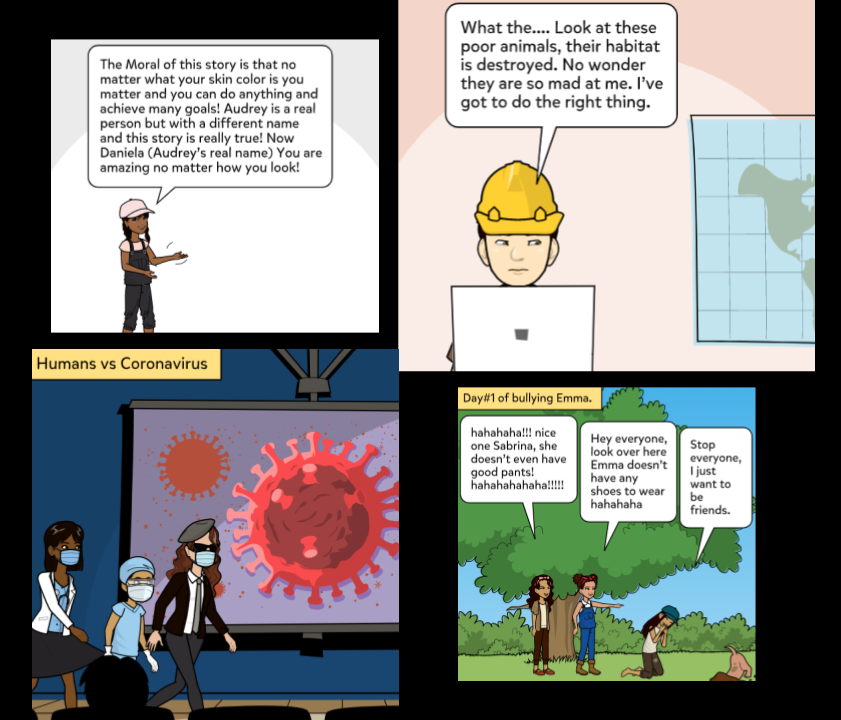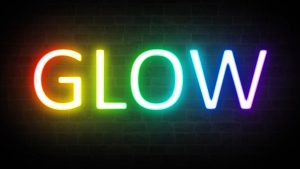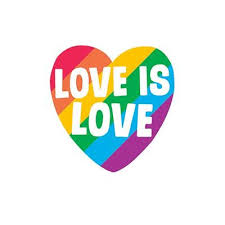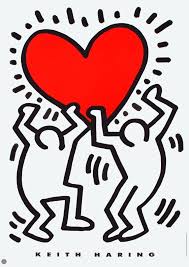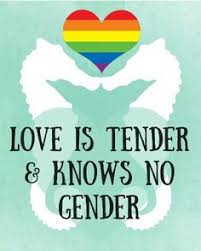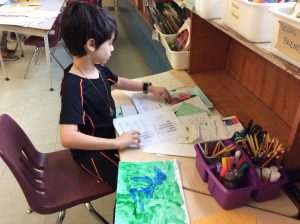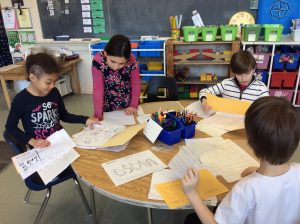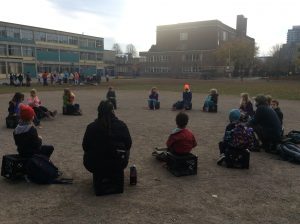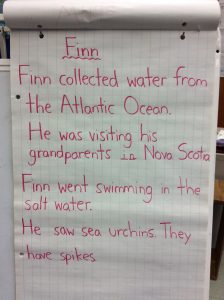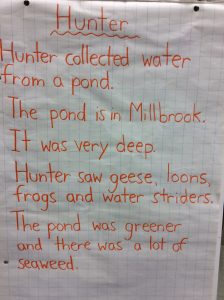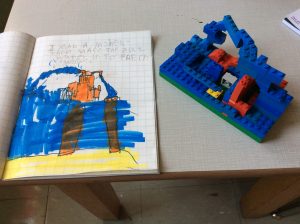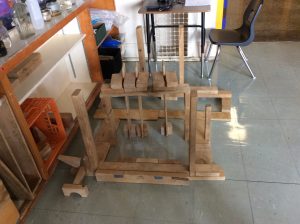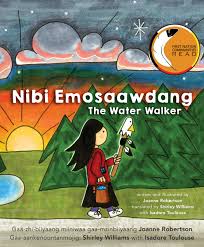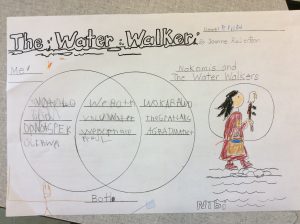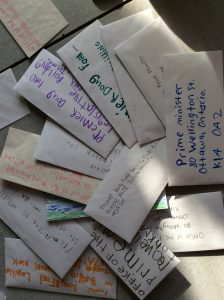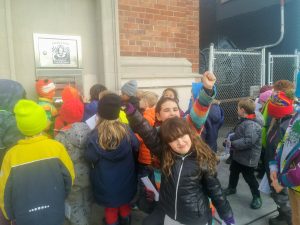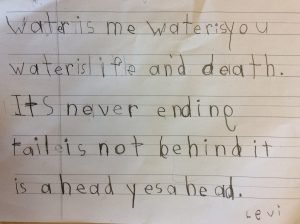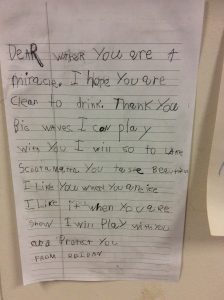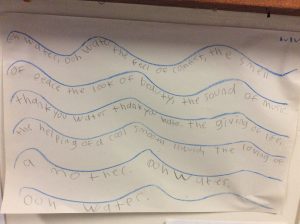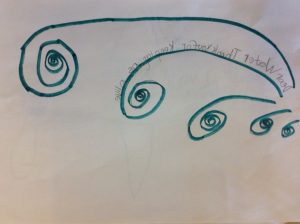This term, I had the honour of working with a Master of Arts student in Child Studies and Education, in his first teaching placement. Working in collaboration as a co-learner and co-teacher is a humbling experience. It is always a lot of work, but I appreciate the opportunity to reflect on my own practice, and remember what it feels like to be a new educator.
Ishai Buchbinder and I had a lot of fun creating an integrated unit about Wind for the Grade 2 students. This inquiry connects to “Air and Water in the Environment” as students “investigate, through experimentation, the characteristics of air and its uses.” (The Ontario curriculum, Grades 1-8. Toronto: Ontario, Ministry of Education, 2005.) This blog post is a documentation of our learning together.
Where Do I Begin?
Ishai asked me to describe the planning process for developing a series of lesson plans and activities that culminate in a summative assessment task. This year, I am trying to integrate Indigenous perspectives through land education and environmental inquiry. I am also trying to center stories of Black excellence and innovation throughout my pedagogy.
First, I look at the expectations in the Ontario curriculum, think about the “big ideas”, and generate a few guiding questions to support our inquiry. Then, I brainstorm several activities that might help us to explore and investigate our learning goals. Next, I gather resources, including: picture books, songs, videos, real-world examples of innovation and creativity. Then, I think about a summative task that would allow students to have choice and demonstrate their understanding in different ways. Finally, I sequence the learning activities in a way that builds on prior knowledge and connects to new learning, while also being responsive and open to following the interests, needs and questions of the students.
Who Has Seen The Wind?
We started our inquiry with an active game called “When The Big Wind Blows…” and a poem by Christina Rosetti called, “Who Has Seen the Wind?” This poem has been re-imagined as a song, which I learned from an Orff Music workshop. There is a simple ostinato that is layered underneath, and patsched on the lap: “Wind, Wind, Passing By.” We chanted and sang this song outside during our Welcoming Circle, and acknowledged the wind with gratitude.
Knowledge Building:
Ishai shared a riddle with the students: “What takes up the most space but is something that you cannot see?” After solving the riddle, the students shared what they already know about air and wind. Then, we asked the students to generate questions about what they wanted to know, using “I wonder…” inquiry cards. These activities help to honour student voice and position all of us as co-learners,
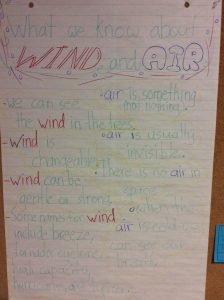
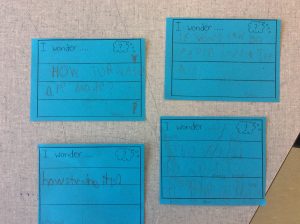
During MSI (Math-Science Investigations), I ask students to design and build a structure that is moved by the wind. Desmond made a dragon. Ezra made an airplane. Florence made a forest. Elliot made a structure that is powered by the wind. All of these activities provided diagnostic assessment and helped to guide the next steps in our inquiry journey.

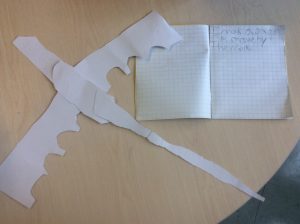
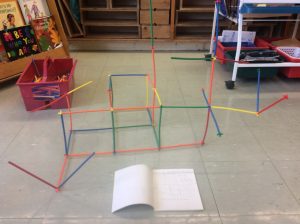
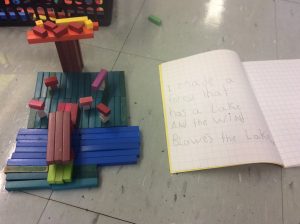
The Boy Who Harnessed The Wind
We learned about the true story of William Kamkwamba, who used innovation and creativity to build a windmill out of recycled materials for his community in Wimbe, central Malawi. You can listen to “The Boy Who Harnessed the Wind” read aloud. You can find William telling his own story by searching his name. His brilliance has also inspired a movie. After reading the book, we made our own paper pinwheels and took them outside. Everyone loved running with the wind and making the blades spin!
Paper Airplanes!
Ishai told us about the “Super Secret Mysteries of Flight”. We learned about thrust, lift, drag, and gravity, and their relationship to air. Then, he showed us how to make a ten-fold paper airplane. Here are the step-by-step instructions. It was challenging to listen and follow each instruction carefully. After folding our paper airplanes, we tested their flight in the school yard. We experimented by changing the thrust, and adapting the wings to make it fly straight and long. This was another active and fun activity!
Mr. W
After watching this short video, we had an interesting discussion about the main character. I asked: What do we know about this character? How does this character feel at the beginning and the end of the video? What kind of things do we see the character do? Why would they do these things? Who is this character? Why was this video made? This discussion encouraged students to think critically about media texts as part of our learning about Media Literacy.
This video also inspired us to begin writing our own Wind Stories. We used a graphic organizer to organize our ideas using time-order words, (First, Next, Then, Finally). Some students wrote from the perspective of Wind, and others described the movement and impact of wind. We used a collaborative editing and revision process to share our stories and improve our writing.
Testing our Theories:
This year, we are fortunate to be working with Doug Anderson, who is the co-author of Natural Curiosity 2nd Edition: The Importance of Indigenous Perspectives in Environmental Inquiry. After learning with Doug in the Rainbow Garden, several students wanted to know more about the relationship between the sun and the wind. Svea asked, “I wonder how the sun makes the wind?”
We talked about how we might find the answers to our questions. We could: read books, look on the internet, ask someone. After reading a book called “Air”, which explained some facts, Ishai asked how we might test what we learned from the book. The students had different ideas about how we could prove that warm air rises and cold air is heavy. We went outside to find out. The students worked in small groups and used movement to demonstrate how the sun makes the wind. It was a great opportunity to use our bodies to express our understanding.

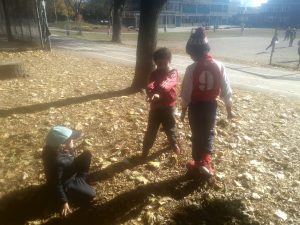
Learning Through the Arts
As we explored the movement of wind, we read the book, “When I Get Older: The story behind ‘Wavin’ Flag’” by K’naan. We learned that the song was inspired by his grandfather’s poem. K’naan’s family journey story supported many thoughtful discussions about civil war and refugees, settlement and anti-Black racism, how schools might be more welcoming to new families, and the impact of poetry and music to create community. We listened to the song many times and went outside with fabric “flags” to wave in the wind. We are hoping to choreograph a dance and embody the lyrics, “Love is the answer”.
We also learned about two artists who have created complex wind sculptures that are moved in the wind. We watched a few videos about the work of Theo Jansen and Anthony Howe. The students were mesmerized and inspired by the movement of these beautiful sculptures.
Another song that we learned was “Blowin’ in the Wind” by Bob Dylan. This is a song that we sing every year during Peace Week and on Remembrance Day. It is an opportunity to reflect on the “big ideas” of conflict and justice. In the past, we have written messages of hope and peace on leaves that are released from the third floor window.
This year, our Visual Arts teacher, Shannon Greene, made powerful connections to Treaty Recognition Week. After learning “A Treaty Poem” by Melissa MacLennon and students, Shannon encouraged the students to write promises of peace on paper leaves to keep in the classroom. Copy of Land Acknowledgement and Dish With One Spoon Resource
Squirrel Nests:
As the leaves continued to fall, the students began to notice piles of leaves in the branches. We learned that they were nests made by squirrels, and we started to think about how animals might protect themselves from the wind. We went on a walking excursion to a local park, and Ishai challenged the students to build their own squirrel nests with leaves, sticks and air.
After building with natural materials, we did a “Gallery Walk” and visited all of the squirrel nests. Students were asked to describe one thing that they were proud of and one thing that they might do to improve their nest next time. These “GLOW” and “GROW” comments allowed us to practice self-evaluation, and provided valuable formative assessment.
Finally, it was time to test our squirrel nests. Each student was given fluffy goldenrod seeds to represent the squirrel, which was placed inside the nest. We used straws to simulate the wind, and to test the strength of each structure. Everyone had an amazing experience learning outdoors together!

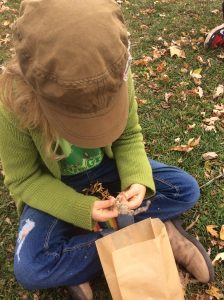
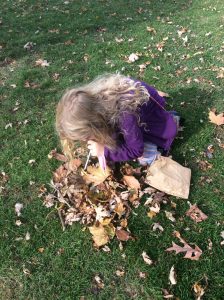
Wind Machines!
As our final summative task, the students were invited to plan, build and test a structure that can be moved by the wind. Before building, students were encouraged to think about what they had learned about wind and apply their knowledge to their structure. Everyone drew a plan and labelled the materials that they would need. We spent several days in the classroom building and revising our structures, based on descriptive feedback.
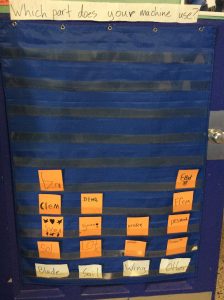
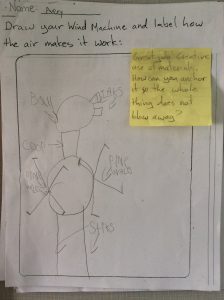
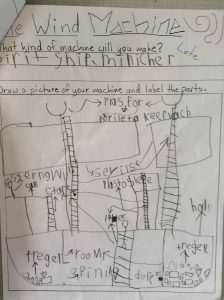
On the day that we tested our wind machines, each student had an opportunity to share their structure and make predictions about how it might move. After testing, Ishai conferenced with each student to document their thoughts and ideas about how successful their wind machine had been, and how they might improve their design next time. It requires more time to connect 1:1 with students, but conferencing provides strong summative assessment data, and supports every student to feel successful about their learning.
Journey through Inquiry
Working with a Teacher Candidate was refreshing and reminded me about the importance of play, storytelling and movement in our lesson planning. Throughout our inquiry about Wind, the students were very engaged, and they had multiple opportunities to explore and demonstrate their understanding. As an experienced educator, I am still learning about how to integrate and make connections across the curriculum in creative ways. I am also learning that when we trust our students and follow their natural curiosity, the journey through inquiry will be deep, meaningful and fun!
